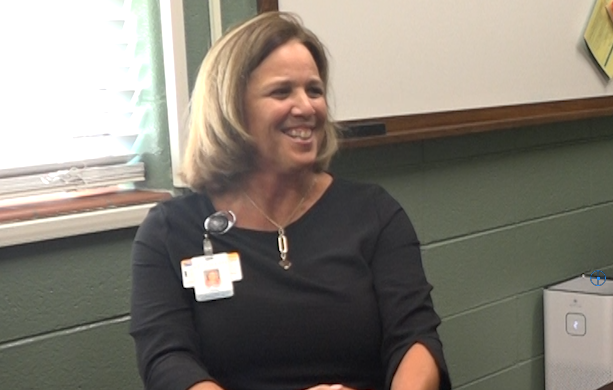SJSD officials stress importance of cutting distractions with cell phone rules

By Jazmine Knight
With strict cell phone bans gaining popularity in schools nationwide, the St. Joseph School District officials said they don’t plan on changing their policy any time soon.
Lara Gilpin, director of secondary education, said the district is looking to be intentional about the enforcement of its cell phone policy. Right now, the district prohibits cell phone usage at any point of the day for elementary students. For middle and high schoolers, they are only allowed to have their phone before school, during lunch and after school.
“We need to eliminate as many distractions as we can in the classroom. It’s about teaching and learning and so that is probably the greatest distraction,” Gilpin said.
With limited distractions, the district hopes to see engagement increase. Gilpin said high schools are the greatest challenge when it comes to cell phones, but staff is working together to enforce the policy more effectively this year.
“When you have a school of 1,600, it’s pretty hard to monitor cell phone usage during the passing time,” she said. “It’s just one more transition of trying to get them to put that cell phone back away.”
On the middle school level, Robidoux principal Alex Tomes said they haven’t had too many instances of students not following the policy.
“Some students will, of course, not enjoy the policy,” he said. “It’s usually corrected, after they hand out those consequences.”
Cell phones are monitored by teachers, campus supervisors, principals, lunchroom staff and other adults in the building. For the first offense, the student’s cell phone is turned into the office for the student to pick up at the end of the day. On the second offense, the phone is once again turned into the office, but a parent or guardian must retrieve the phone. If there are subsequent instances, teachers, faculty and staff work together to create an individualized plan for that student.
“Like as soon as they get to school, they turn into their homeroom teacher, their first hour advisement teacher,” said Tomes. “That’s kind of on a student-by-student basis.”
In today’s climate, some parents may be concerned about getting ahold of their child in case of an emergency. So far, district officials said there’s been very little pushback from parents on the district’s phone policy. Once they explain to the parents why the policy is in place and how it impacts learning, most are on board.
“Students can’t learn when they’re using their cell phones. Teachers can’t teach them when they’re using their cell phones because they always have to correct them,” said Tomes.
He said the district is definitely taking a step in the right direction when it comes to phones. Tomes said reducing cell phone usage also addresses other issues like bullying.
“When we have a bullying investigation, I’d say at least 90% of the time it involves a cell phone,” he said.
Despite the challenges, Gilpin said “we’re not there yet” in terms of banning cell phones. However, students should be mindful of their cell phone use for better mental health and better interaction.
“During my time, I would come to school because I wanted to be able to talk to my friend,” said Gilpin. “When you’re really addicted to the phone and when you’re into the phone, that’s your only communication, I think that creates a little bit of a problem for our students.”
Though phones can be used as an academic resource, students should have computers that typically provide the same outcome. Responsible online use can also be a major concern when it comes to cell phone usage.
“Sometimes students aren’t always making the best choices as far as what they’re sending. And so it can really take away the opportunity for student learning in the classroom,” Gilpin said.
For parents or students that still have concerns with the policy, officials suggest speaking with a teacher about a compromise.
“All of our administrators are understanding of that and are willing to work with those families and the students to make plans,” said Gilpin.
She suggested creating a plan where the student could swing by the office to check for important phone calls throughout the day. Gilpin also ensures that all classrooms and offices equipped with phones that can be used for family communication if needed.
“Hopefully our families understand to work on the arrangements before or also to know when to text during the day, if you’re going to communicate,” she said.
Gilpin hopes that once families and students understand the policies, success isn’t far behind. She says the district will continue to monitor and support staff when it comes to enforcing the cell phone policy.



